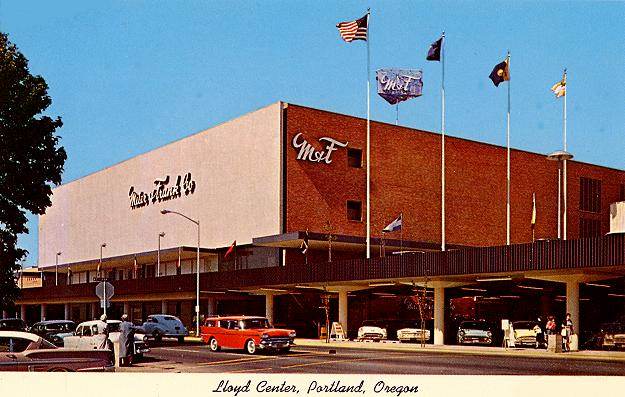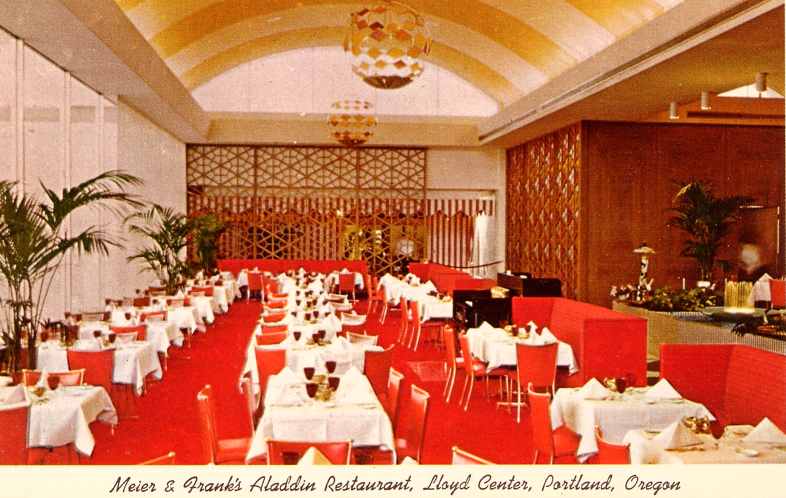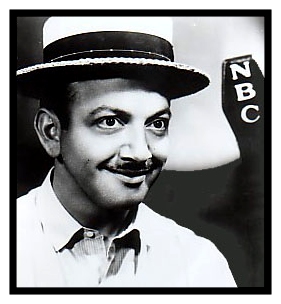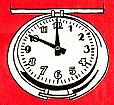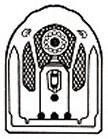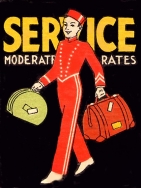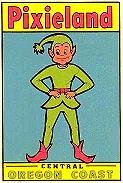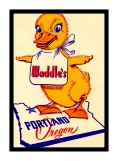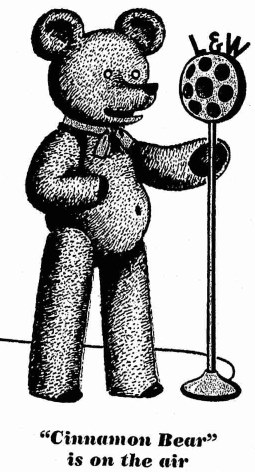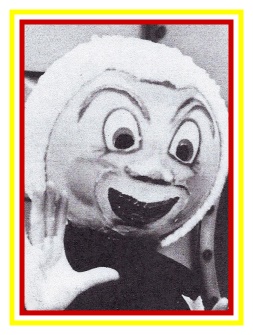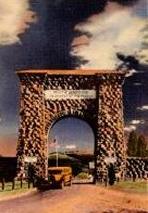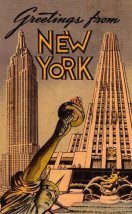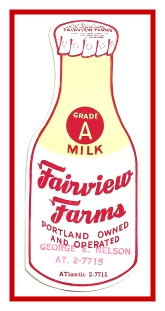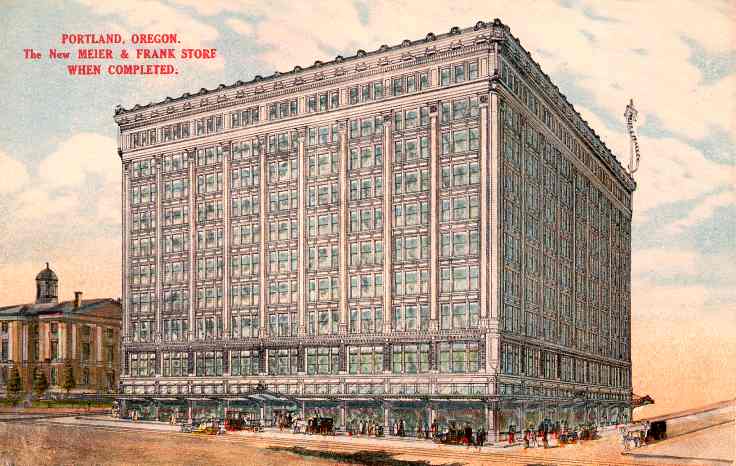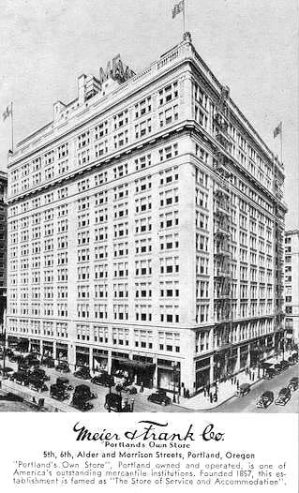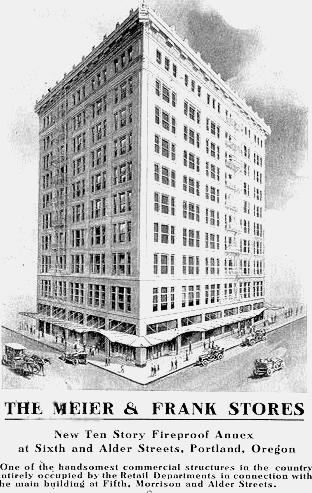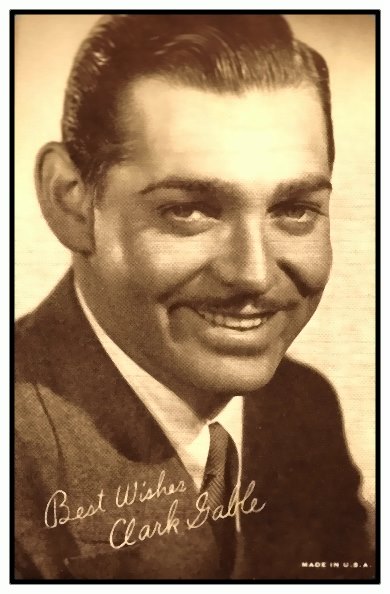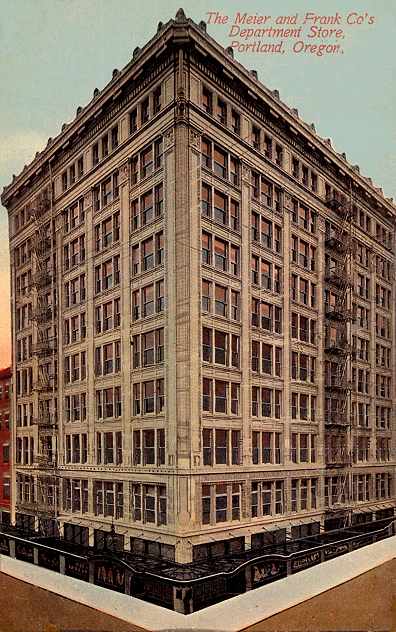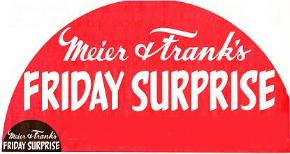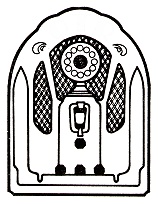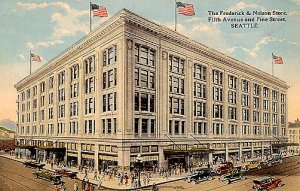|
|
 |
 |
 |
 |
 |
 |
|
 |
 |
 |
 |
 |
 |
 |
|
 |
|
|
|
 |
|
|
|
|
 |
|
|
|
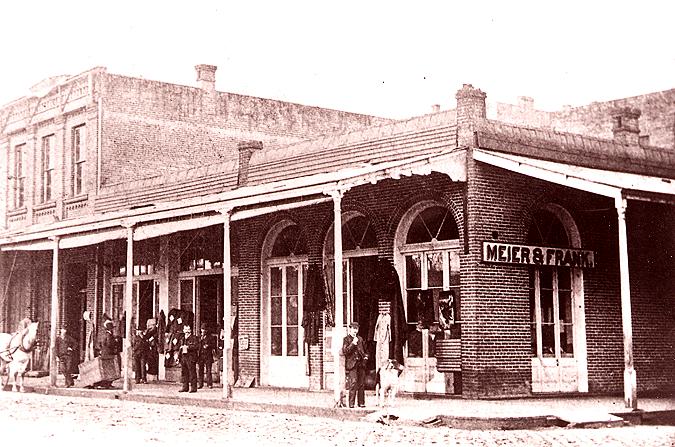 |
|
|
Meier & Frank’s first location.
|
|
|
|
Aaron Meier was born in Germany in 1831 and he immigrated to California in 1855. Meier soon moved north to a plot of land in Wilsonville, Oregon and he began selling merchandise from a pack in the rural areas south of Portland.
By the time he was 26, Aaron Meier rented a 35 X 50 foot space and began selling dry goods at 137 Front Street in Portland in 1857. His father died in 1864 and Aaron Meier went back to Germany to collect his inheritance and he got married as well. When he returned, he set up shop in larger quarters (a 25 X 100 foot space) at 136 Front St.
In 1873, Emil Frank became a partner of Aaron Meier and the signs were changed to Meier & Frank. Their partnership prospered and the store expanded in 1881. By 1885, they had moved to a new building on Taylor Street, between First and Second Streets. That year Emil’s younger brother Sigmund, who was working for the store, married Meier’s only daughter, Fannie, having started as her music tutor. When in 1888 Emil left the partnership after years of simmering management differences, Meier took Sigmund on as his principal partner, maintaining the name of the store. Aaron Meier unexpectedly died at age 58 on August 18, 1889, while eating breakfast.
Sigmund Frank became the sole manager and Meier & Frank was incorporated. He distributed the stock to both families. Meier’s widow (and Frank’s mother-in-law) was the real force behind the management of the store. Jeannette Hirsch Meier had brought many of her half-brothers and nephews over from Germany to work at the store. Among them was Max Hirsch who after 20 years’ service, cashed in his Meier & Frank stock in 1906 to buy Willamette Tent & Awning. He and his partner, Harry Weis, turned it into White Stag (“Hirsch Weis”, in German), which would become a major sportswear company in the 1930s under Max’s son Harold.
Meier & Frank expanded again in 1891 and by 1898, Frank moved his store into its own building. Meier & Frank had emerged as “One of America’s Great Stores” after it was moved uptown into its elegant five story building on 5th Street between Alder and Morrison.
|
|
|
|
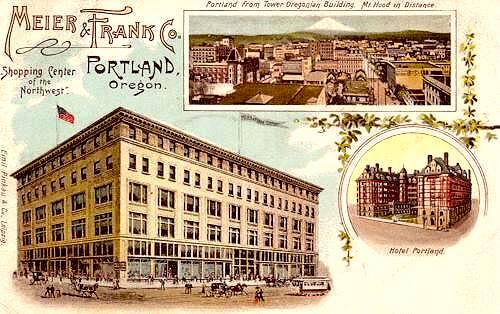 |
|
|
Meier & Frank moved to 5th and Morrison and built this building in 1898. By 1913, they had outgrown this building and it was torn down in 1913. A new building rose in its place which was incorporated into “The Annex”. By adding on to The Annex, Meier & Frank now covered three-fourths of the block.
|
|
 |
 |
|
The building shown above had two elevators and incorporated many mechanical innovations never before seen on the West Coast. It boasted floors that were 200 X 100 feet for a total of 120,000 square feet of floor space. In 1909, two years after the 50th Anniversary, they built a ten-story annex with two basements at 6th and Alder.
When Sigmund Frank died in 1910, Aaron Meier’s older son Abe took the helm. Abe’s younger brother Julius became the store manager and actually guided the store’s growth. Julius Meier had a great deal of influence in civic and political circles and was elected Governor of Oregon in 1930 as an independent—the first Jewish Governor of the state. His country estate near Corbett, “Menucha”, is now a conference center run by First Presbyterian Church.
In 1913, the five-story building built in 1898 at 5th & Morrison came down and work began on an addition to the 10-story Annex. The new building covered three-fourths of the block and it was completed in 1915. Over the next few years, the remaining quarter block at 6th & Morrison was purchased, the existing building was demolished and the Meier & Frank building, which now covered a full block, was completed in 1932.
|
 |
 |
|
The original architect was A.E. Doyle, who completed a similar transformation at the U.S. Bank headquarters building when floor space doubled in 1924. He also designed the Central Library, Reed College, Multnomah Falls Lodge and the Lipman & Wolfe store across Alder street from Meier & Frank.
For a time, Meier & Frank reigned as the largest retail outlet west of the Mississippi and one of the largest stores in the nation. The building represents one of the earliest examples of the Terra Cotta-type commercial palaces.
When Julius Meier became Governor, management of the store passed to his nephew, Aaron (Bud) Frank, Sigmund Frank’s son, who had been practicing law after graduating from the University of Oregon Law School in 1913. During the Great Depression, Frank canceled interest on all of the store’s customer accounts. During World War II, Frank stopped advertising merchandise in the newspapers and devoted its advertising space to the war effort. Meier & Frank sold more War Bonds than any other outlet in America.
|
 |
The 10-Story Annex built in 1909.
|
|
 |
M and F’s covered a full block in 1932.
|
|
 |
Known as “the Store for Service and Accommodation”, it wasn’t just the building, which has endeared Meier & Frank to Portland shoppers, but it was the personal approach practiced by its owners. They believed that satisfied patrons were the best advertisement.
|
 |
 |
|
Meier & Frank Delivery Trucks line up before making their deliveries.
|
 |
 |
|
Meier & Frank sold just about everything, except motor cars and farming implements, however the Hardware Department would gladly sell you a shovel, rake or hoe. Meier & Frank would deliver their merchandise in one of their ubiquitous green trucks if you couldn’t make it to the store, no matter how small the order, even a spool of thread.
Early on, Meier & Frank was one of the few stores to maintain a buying office in New York. Sales representatives would joke that there were four major markets on the West Coast: Los Angeles, San Francisco, Seattle and Meier & Frank.
|
 |
 |
|
One of Portland’s favorite traditions was the annual Friday Surprise at Meier & Frank’s. The tradition started on April 29, 1887 as a weekly sales event. When Meier & Frank held a Friday Surprise, crowds of people would fill the aisles. Friday Surprise became the Friday Frenzy. Sales records went through the roof.
|
 |
 |
|
In 1950, Meier & Frank replaced its central bank of elevators, which were “Under the Clock”, with the largest escalator installation west of the Mississippi. In 1955, Meier & Frank opened a brand new 185,000 square foot store in Salem.
|
|
|
 |
 |
|
Information provided by Radio Historian Craig Adams.
|
|
|
 |
 |
|
On October 3, 1922, the U.S. Department of Commerce’s Radio Division in the Bureau of Navigation, gave authorization for the construction of station KFEC to Meier & Frank. Portland Radio Pioneer Wilbur J. Jerman installed the apparatus. He would later build his own station KFWV in 1925, which became KWJJ in 1927.
KFEC began broadcasting at 9:00 pm on October 19, 1922. The one hour inaugural program featured Earl Fuller's New York Jazz Band. The studio was located on the 5th floor of the Meier & Frank building and it was separated from the broadcast apparatus "with heavy curtains draped across one end of the room. This room was also used as a library and reading room by Meier & Frank employees." KFEC's antenna was atop the 16-story building.
Aaron (Bud) Frank (father of Gerry Frank) was Station Manager and he was also the Assistant Store Manager. KFEC was staffed with store employees. Also in 1922 other stores across the Nation had also made the move into broadcasting. Seattle's Rhodes Department Store began KDZE and later KFOA. Boston's Shepard Department Stores began WNAB & WNAC. The KFEC broadcast schedule consisted of Musical Entertainment & Features from 4 to 5 pm Monday thru Saturday; there was an Evening Concert from 9 to 10 pm Thursdays and a Childrens Hour which aired 11 to noon on Saturdays.
On February 17, 1924, the station announced in a Meier & Frank ad: "KFEC has been upgraded from a Class "C" to a Class "A" license and now broadcasts on a 248-Meter Wave Length." By July 1924, KFEC had begun a "lost and found service” to aid in locating lost articles and getting in touch with missing persons. The service was free." The station’s slogan was “KFEC - The Meier & Frank Station”.
By September 1926, KFEC was reportedly playing "canned music" or phonograph music. At this time, playing recorded music was looked upon as being in a grey area. Stations were not paying recorded music royalties. Records were easy to obtain, Meier & Frank’s Music Department had a large selection of 78's one floor above KFEC on the 6th floor. On November 9, 1926 KFEC began carrying Portland High School conference football games at 3:15 pm.
Meier & Frank won five lawsuits in a radio broadcast patent infringement action by stipulation in US Federal Court on May 12, 1927. The suits were brought by: Irving Berlin Co., T.B. Harms Co., Leo Feist Co., M. Whitmark & Sons as well as Shapiro, Bernstreet & Co. These five music publishers were arguing that they were due royalty payments for all recorded copyrighted music which KFEC broadcast.
On January 11, 1928, KFEC announced it had rebuilt its old transmitter for louder reception and had installed new microphones, plus they erected new antenna towers which stood 40 feet above the large neon Meier & Frank sign, on the roof of the store. Engineers fought with static in their broadcasts and they assumed it was caused by interference from the electric current that was used in lighting the neon sign.
Just four months later, on May 21, 1928, KFEC moved its transmitter site to the new four story Meier & Frank Delivery Depot Building at 14th & Everett and they installed a new Western Electric transmitter on top of the roof. Programs continued to originate from Meier & Frank's 5th floor studio. KFEC’s slogan became: “Meier & Frank's Own Radio Station”.
On November 23, 1928, KFEC announced an expanded schedule that included Amos & Andy. This was the first airing of the program in Portland from 10-10:15 pm, syndicated by WMAQ. KFEC added Buckaroo Hockey to its High School football lineup.
KFEC was shut down temporarily on February 1, 1929 when the station was sold to A.E. Kern & Co. When the sale was halted three days later, KFEC began operating again from Meier & Frank on February 4, 1929. KFEC signed off the air again on March 20, 1929, when the station was acquired by Carl E. Haymond, owner of KMO in Tacoma. Haymond moved the station to Yakima,Washington on March 22, 1929 and the KFEC calls letters were changed to KIT.
|
 |
|
|
|
 |
In 1955, Meier & Frank opened a brand new 185,000 square foot store in Salem.
|
 |
Interior view of the new Meier & Frank Store in Salem.
|
 |
 |
|
In 1960, Meier & Frank opened a new 300,000 square foot store at Lloyd Center and they became the largest tenant in America’s Largest Shopping Center.
|
 |
 |
|
The Aladdin Restaurant became a Portland favorite as it overlooked the skating rink. In the 1980’s, Lloyd Center was remodeled and the Aladdin closed.
|
 |
|
|
|
 |
 |
|
After a spirited battle which pitted Aaron Frank and some family members (who wanted to sell to Broadway-Hale) against Jack Meier and other family members (who wanted to sell to May and Company), the families sold out to May in 1966. Over the next few decades, stores were added as new shopping centers went up in the Portland area. Meier & Frank stores were located at Washington Square, Clackamas Town Center and Vancouver. They added stores in Eugene and Medford as well.
In 1966, when the May Company purchased Meier & Frank, the Friday Surprise was discontinued. Several years ago, the tradition was temporarily revived. In addition to surprising storewide savings, Meier & Frank’s Georgian room became everybody’s favorite lunch spot. You could get The Roasted Turkey Surprise Special, which came with Strawberry Shortcake. A band entertained the many patrons on the main floor of the Downtown Store.
In addition, Meier & Frank associates took turns operating the elevators and calling out the floors as the elevator operators did in the early days. The Surprise of the Day was getting to meet Gerry Frank and getting a signed copy of his book, “Friday Surprise” which is a collection of his newspaper columns from The Oregonian.
Gerry Frank’s distinguished career included a number of years as Senator Mark Hatfield’s chief of staff and he traveled extensively. Gerry is famous for his “Where to Find It” Guidebook for New York. He has authored a number of books and he continues to share his knowledge at public appearances.
Several years ago, May and Company bought Zion’s Department Store, which was headquartered in Salt Lake City, and put them under the Meier & Frank banner. This move effectively doubled the number of Meier & Frank Stores. Meier & Frank opened a new store at The Streets of Tanasbourne and it was the first Meier & Frank store to open in Oregon in nearly 30 years.
The Flagship Meier & Frank building at 5th & Morrison Street was remodeled and re-christened “Macy’s at Meier & Frank Square.” The Downtown Macy’s greets the shopper with a beautifully restored Terra Cotta Palace reminiscent of the old Meier & Frank store where the lower five floors of upscale retail space are stocked with the latest fashions in Designer Wear and Home Furnishings. The top 10 floors of the downtown store have been converted into an upscale 330-room hotel called “The Nines” under the Starwood Hotels & Resorts luxury line. Several restaurants operate in the exclusive, tax-free, Shopping Destination Resort. Expansion and remodeling at Clackamas Town Center, Washington Square and Westfield Shopping Town in Vancouver is complete.
How we long for the days when you could find the freshest meats, cheeses, wines, candies, pastries and delicatessen food at the Meier & Frank Deli on the lower level. It was such fun to shop in Meier & Frank’s two basement levels.
|
 |
|
|
|
|
|
